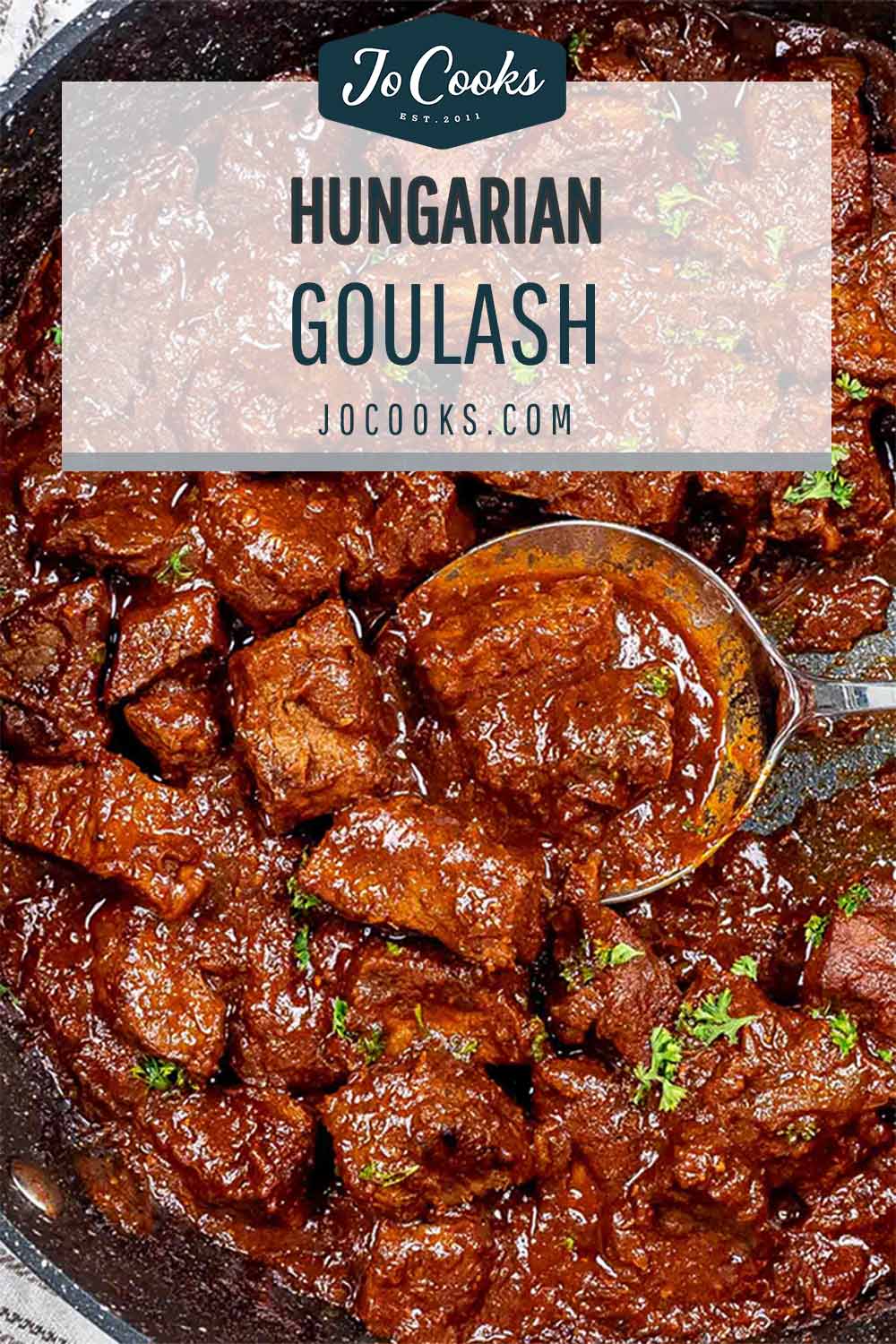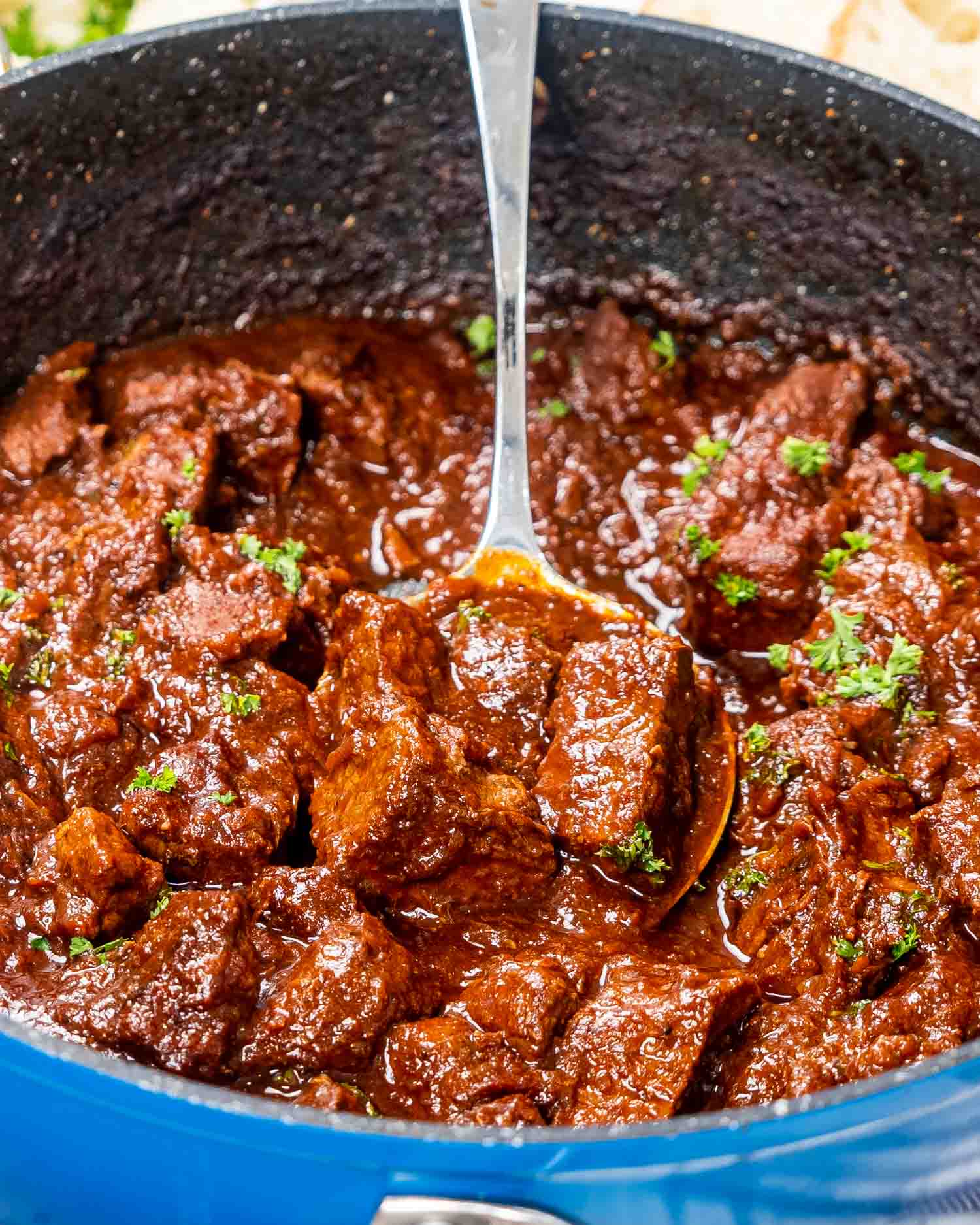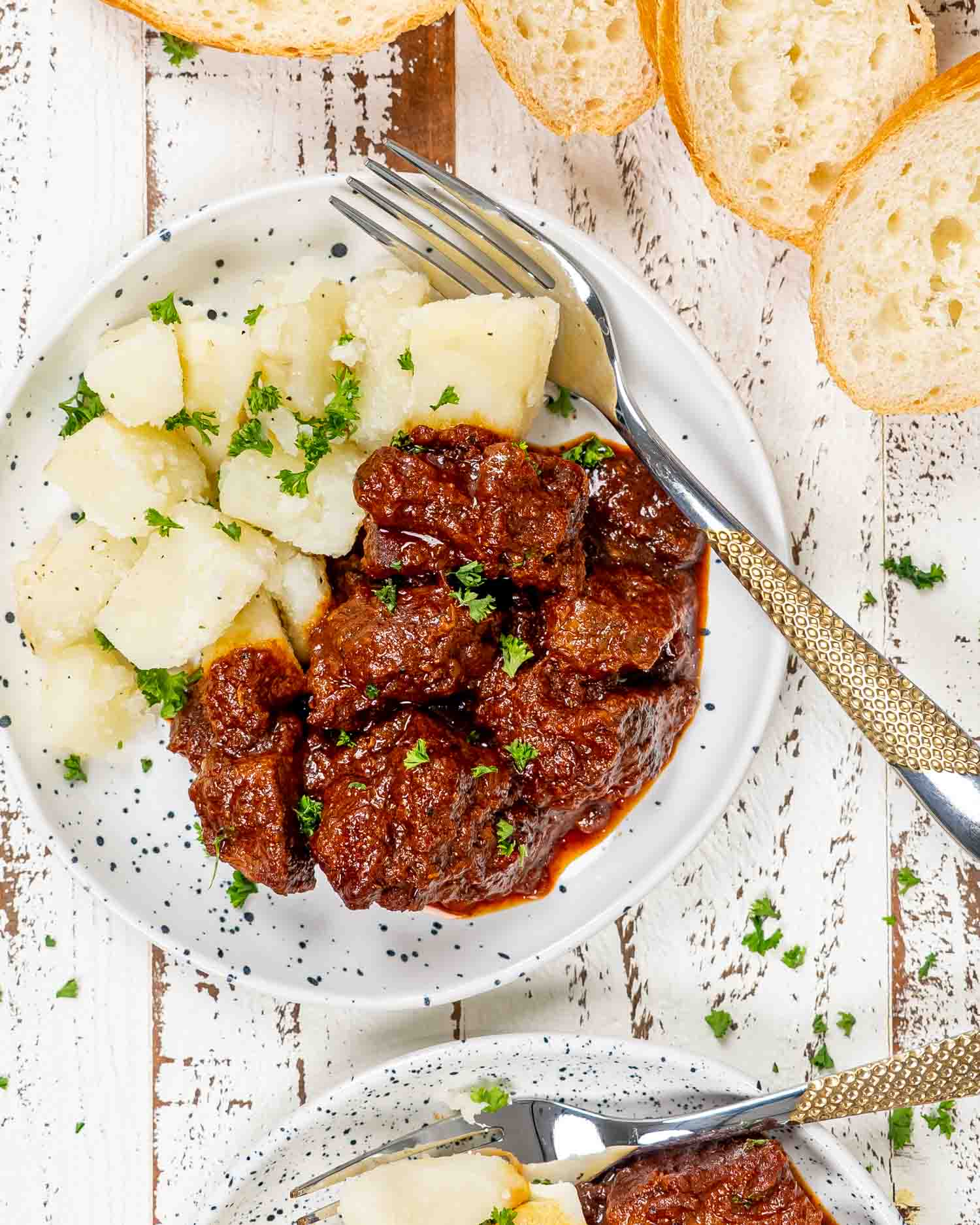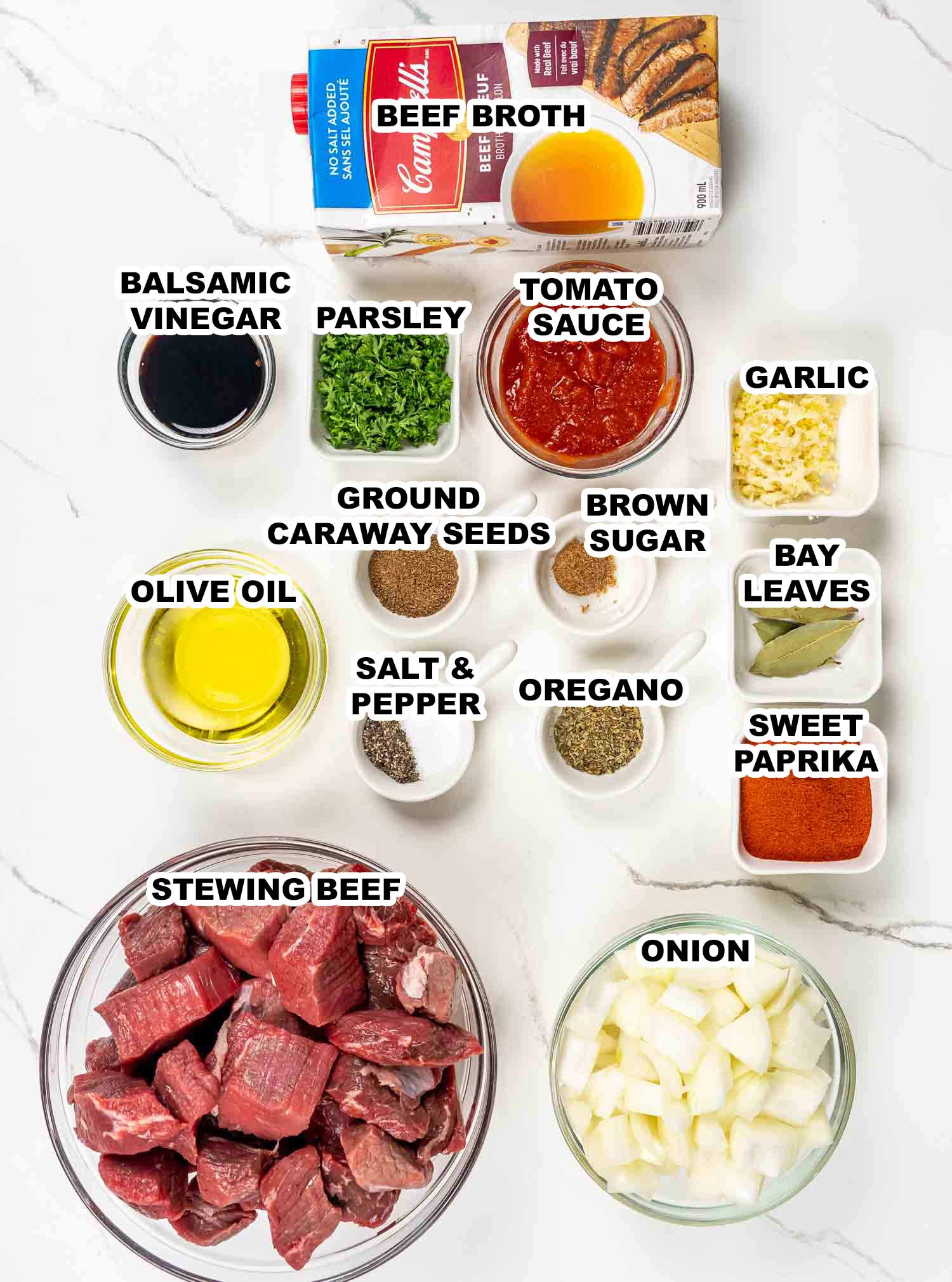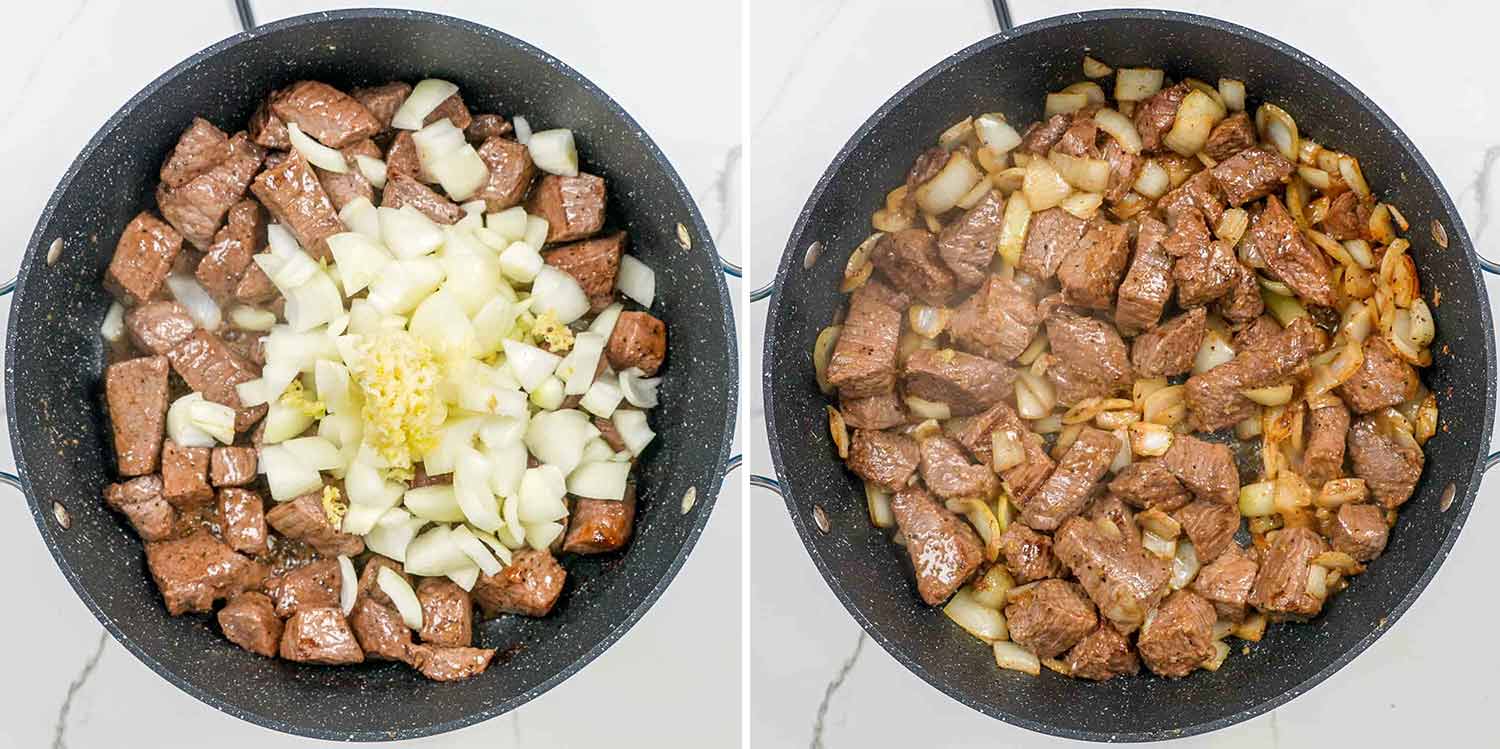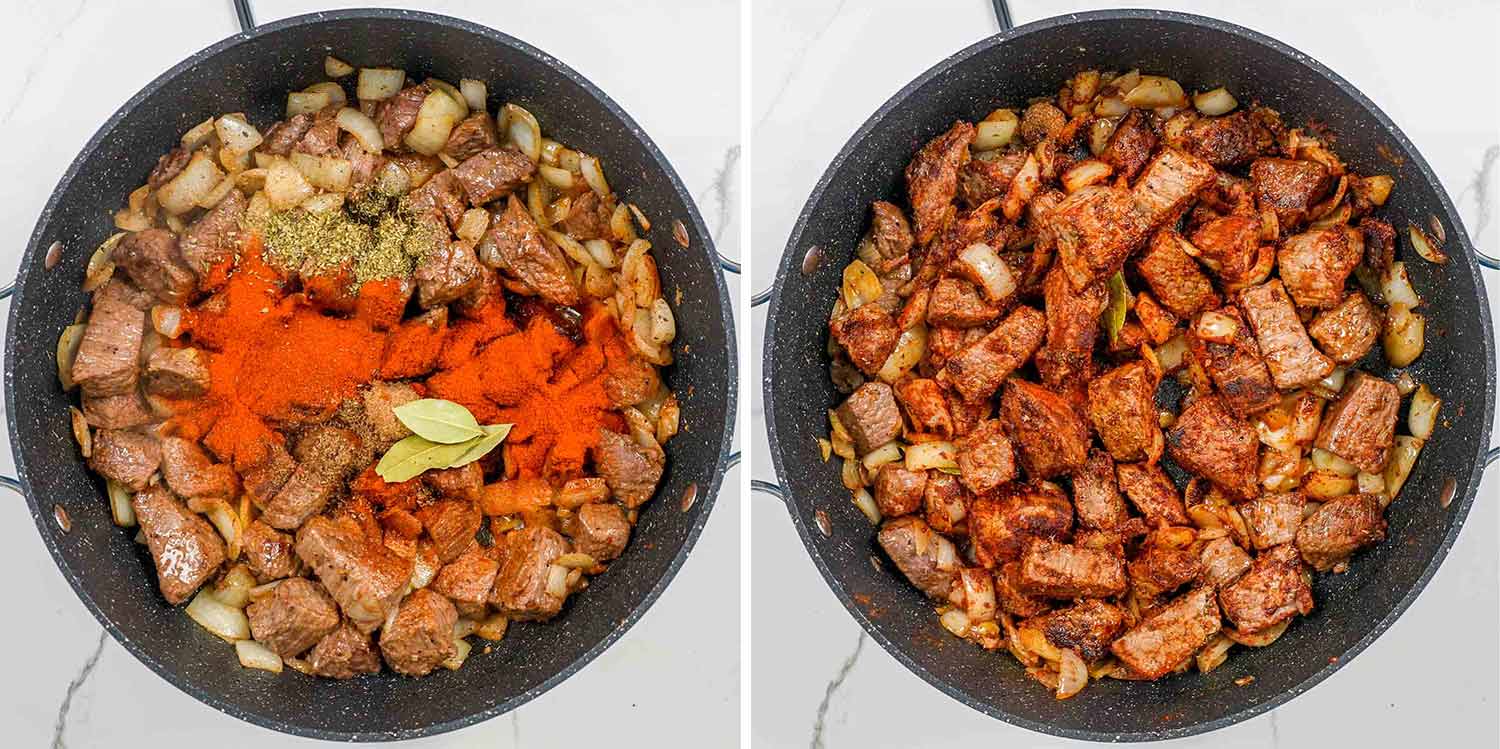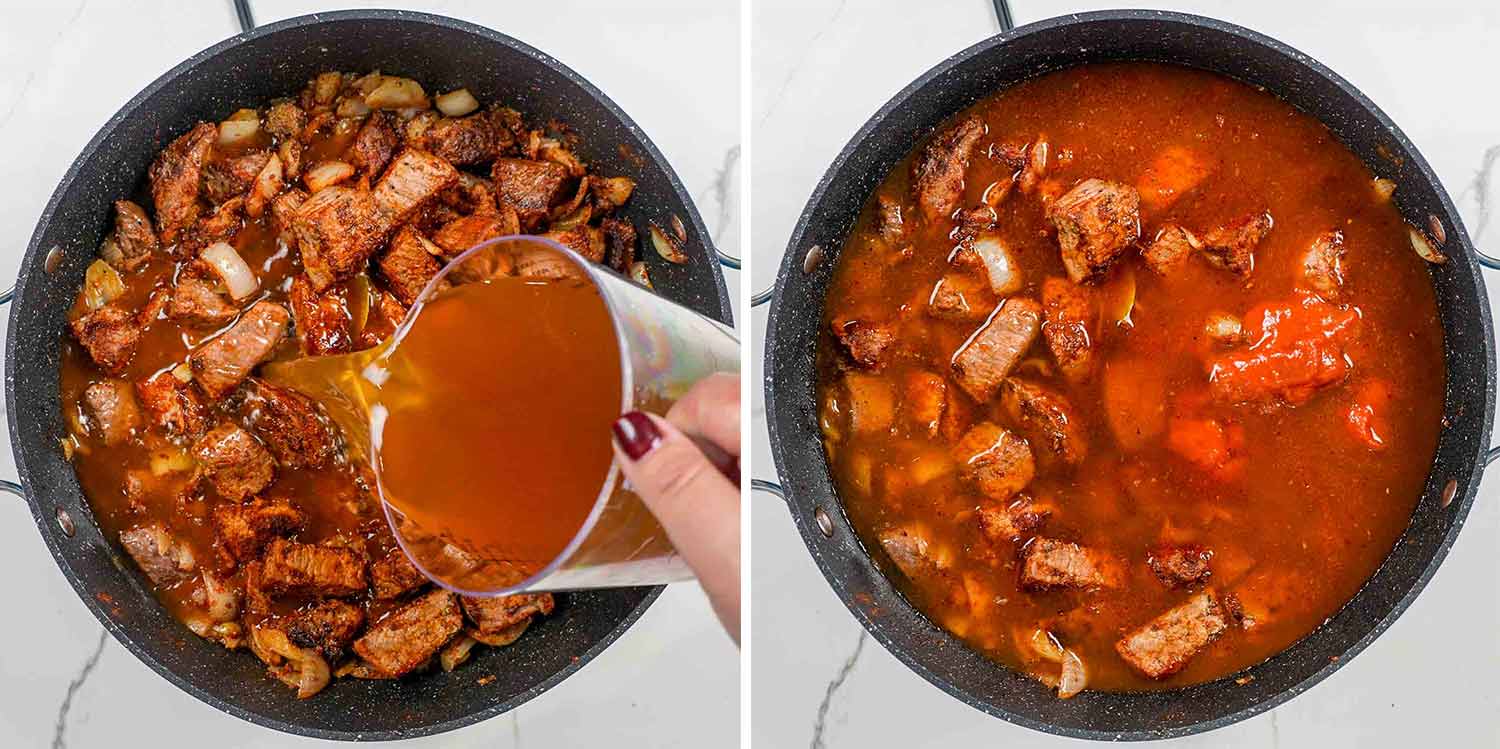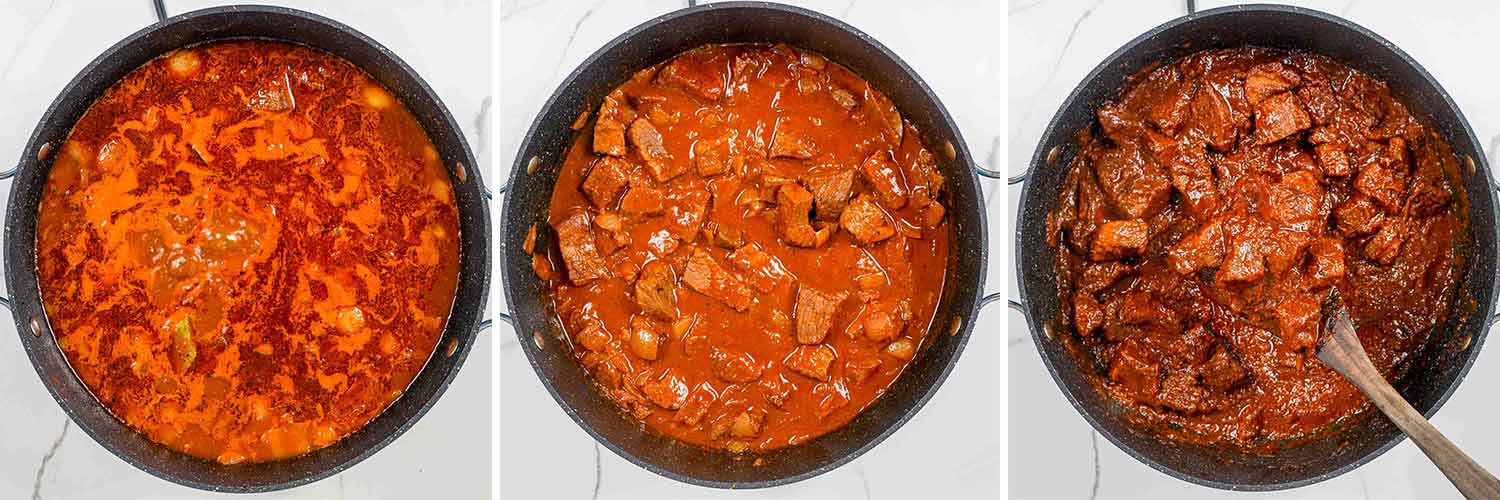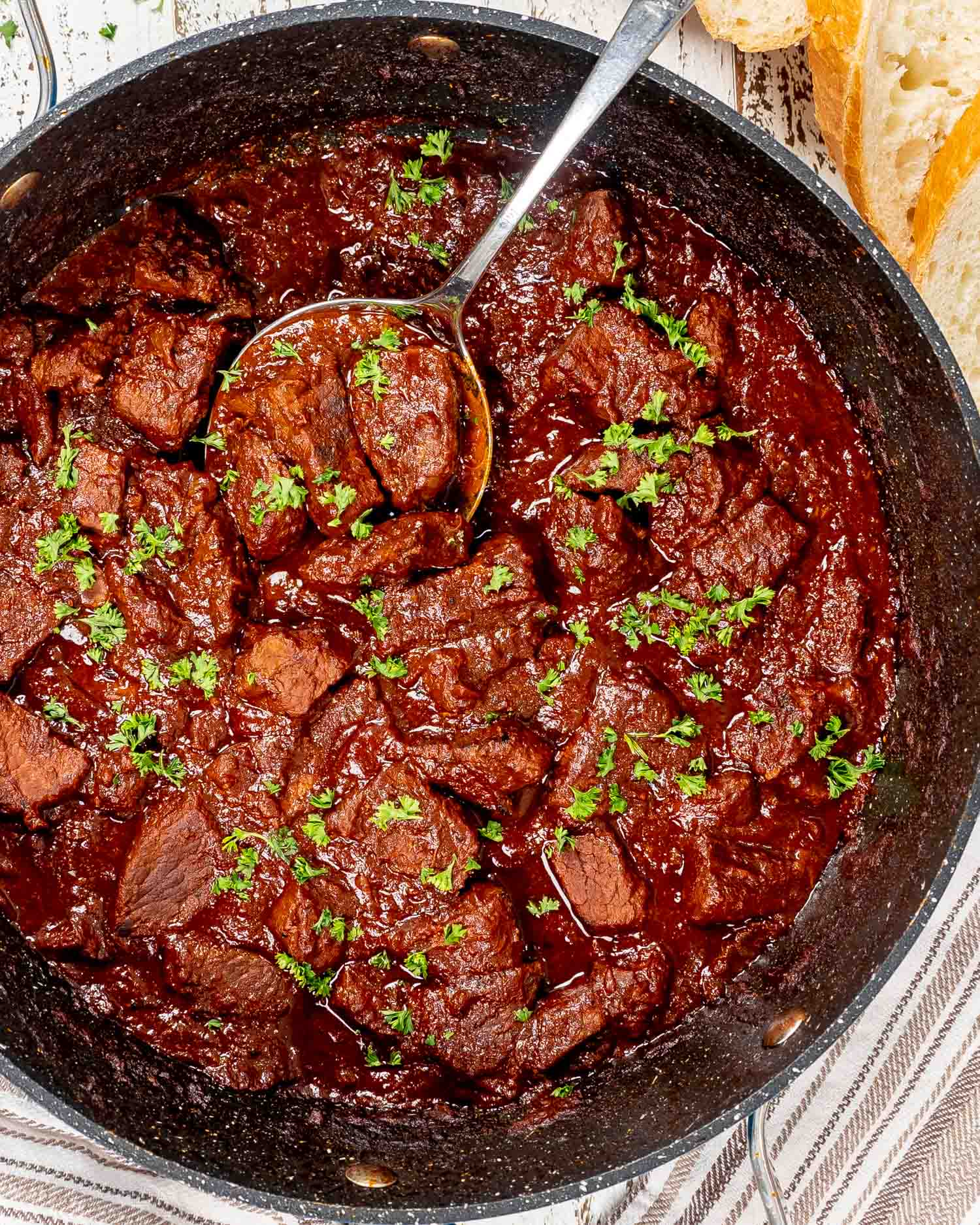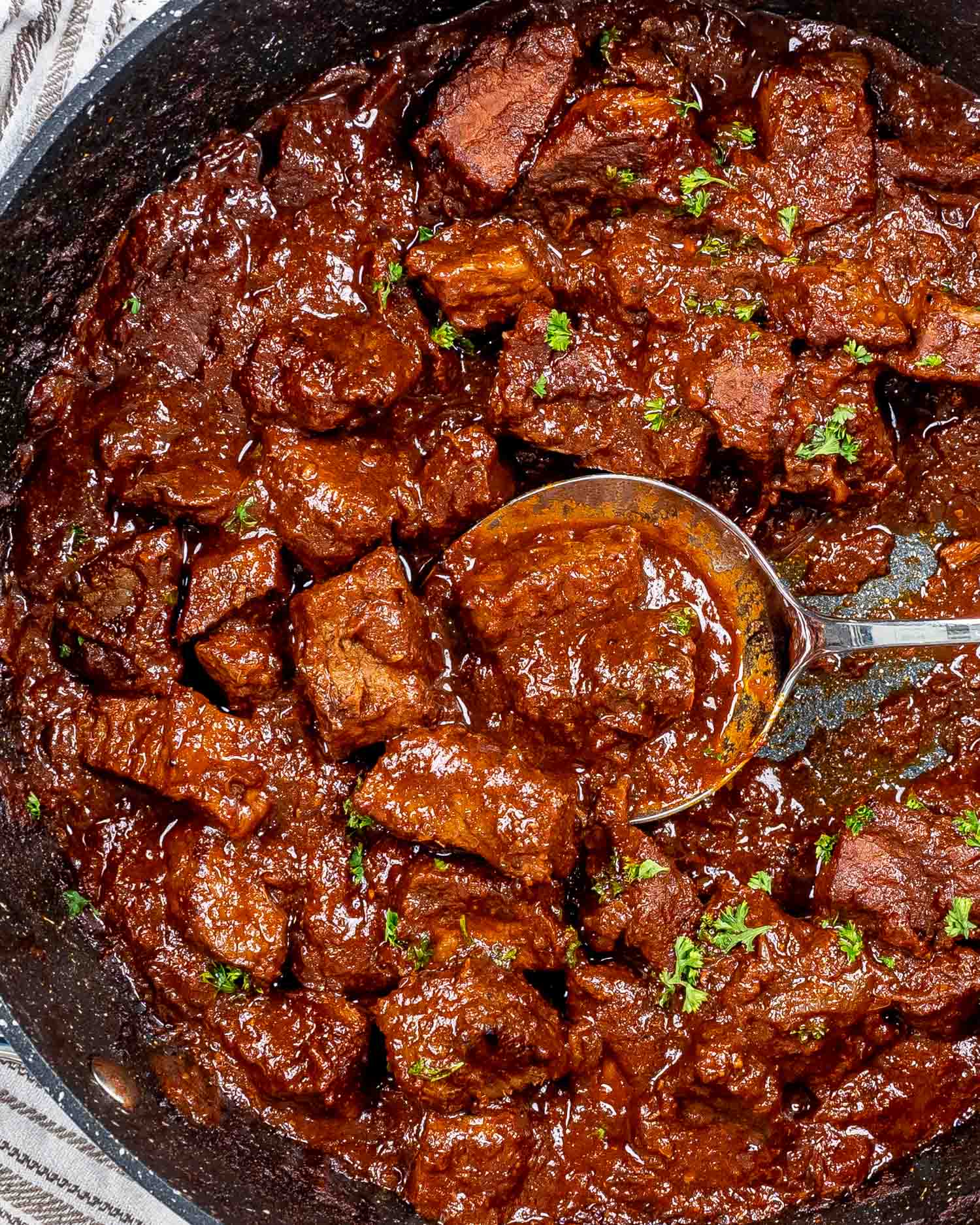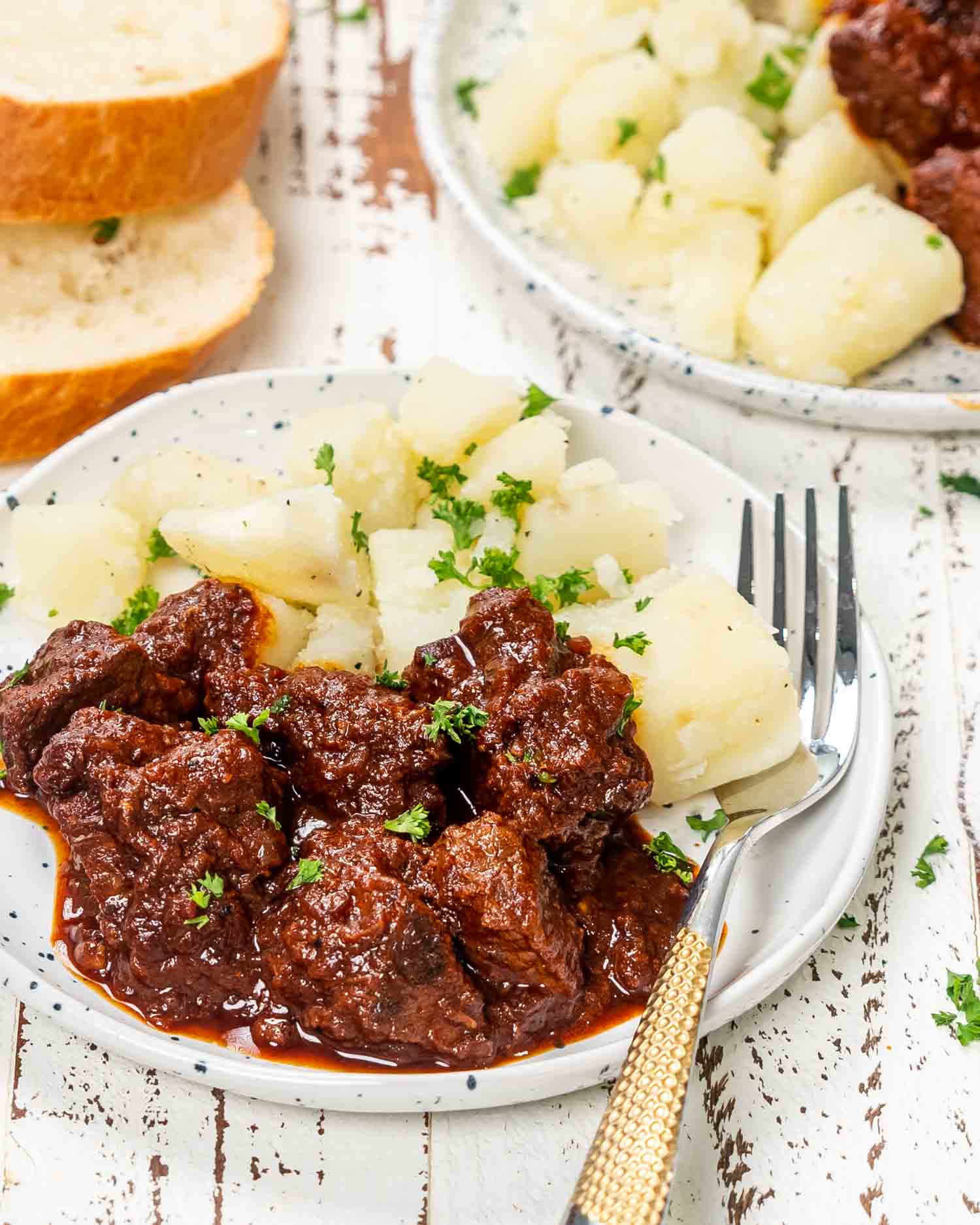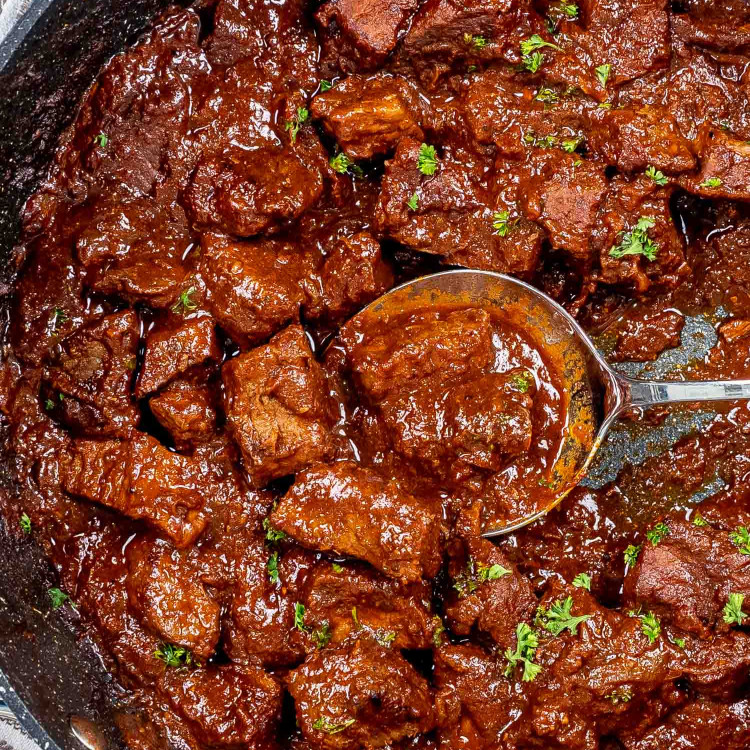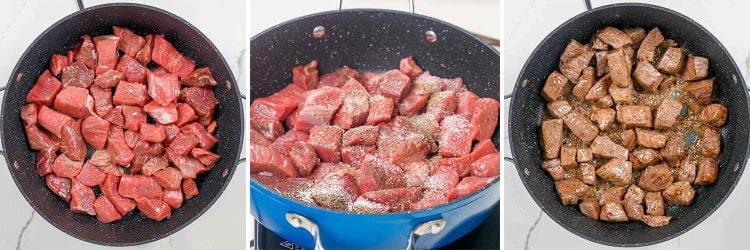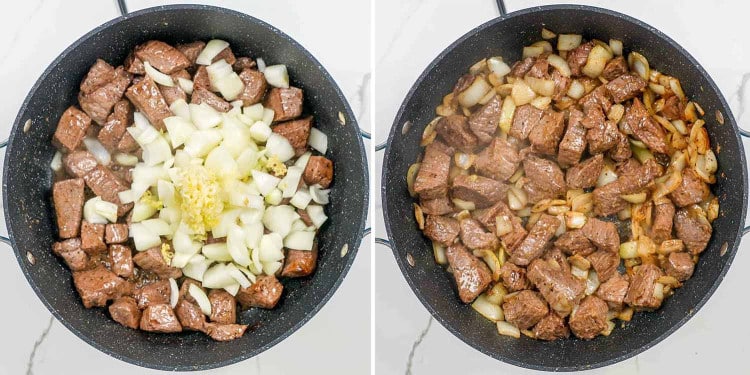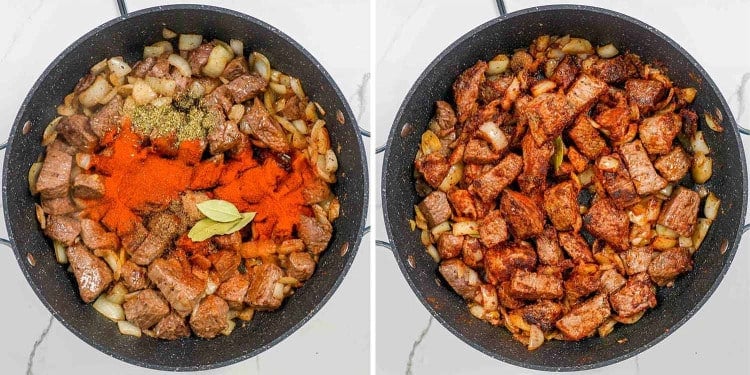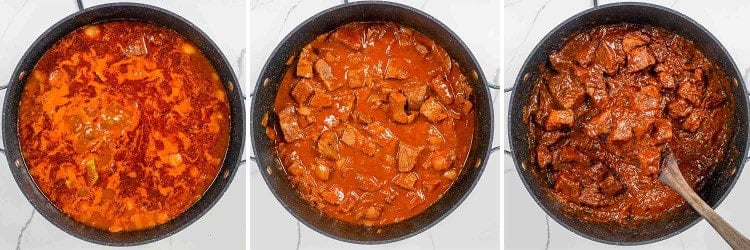What Is Hungarian Goulash?
Hungarian Goulash is a hearty meat stew that is a staple in Hungarian cuisine. It is traditionally made with beef, onions, paprika, and various vegetables such as potatoes, carrots, and bell peppers. Goulash is typically seasoned with caraway seeds, garlic, and bay leaves, and is often served with bread, egg noodles or spaetzle. This Hungarian classic stew does not rely on a flour or roux for thickening. Many versions also include potatoes, carrots or turnips. But I wanted to keep this version simple because I want to showcase how with just a few simple ingredients you can achieve incredible flavor. So let’s get into this melt in your mouth recipe from the old country and as they say in Hungary, edd meg!
Olive oil – We will use olive oil to brown our beef. Browning your beef is key to develop a rich complex flavor which is essential when making such a simple recipe. Stewing beef – Stewing beef is generally from chuck or round cuts, tougher cuts that become flavorful and tender when cooked in stews. A less tough cut of beef will fall apart in a recipe like this. Salt & pepper – My recipe calls for a teaspoon of each but you can tweak this seasoning if you desire. Onion – Choose an onion that will hold up to a long, slow cook time. I used white for this recipe. Garlic – I used fresh but if minced in a bottle is all you have, just remember that 1½ teaspoon is equal to one fresh clove of garlic. Paprika – The paprika should really shine in this dish so I opted for sweet Hungarian paprika. Caraway seed – This spice has a distinct warm flavor and gives this dish some brightness. We want these ground so if you can only find them sold whole just grind them with a mortar and pestle. Oregano – Packed full of vitamins, this little herb packs more than just flavor. I used dried Oregano for this dish. Bay leaves – This is an aromatic used in the cooking process, make sure to fish it out before serving the dish as it’s not meant to be eaten! Brown sugar – We want to develop complex flavor and a thick rich sauce as we cook. This adds some crucial sweetness to the meat and the sauce. Tomato sauce – The base to our sauce, tomato sauce lends some acidity to the dish to help balance out all our big flavors. Balsamic vinegar – A nice dark vinegar like balsamic will help all our flavors really penetrate the meat as it cooks. Beef broth – You’ll want to use no sodium added beef broth, we really want to make sure we control our sodium level in this dish. Parsley – Chopped fresh for garnish.
The big difference between a traditional stew and Hungarian stews is that Hungarian stews do not rely on a flour or roux for thickening, which is why most of the time it’s more like a soup and it’s usually served over noodles, potatoes or spaetzle. In a large skillet or dutch oven, heat the olive oil over high heat. When the oil is hot add the beef, season with salt and pepper and continue to sear till the meat begins to brown. We want the liquid that the beef releases as it cooks to evaporate off so be sure to keep the heat on high. Next, you’ll want to add the onions and garlic to the dish and cook till the onions begin to soften and go translucent. Make sure that your garlic doesn’t burn at this time, though it shouldn’t because there should be enough moisture in the pot. If need be, add the garlic right when the onions are soft. Now, you’ll want to add all the spices, so go ahead and add the sweet paprika, oregano, bay leaves, caraway seed, and brown sugar, be sure to stir all of these together before allowing to cook for 30 seconds. Next, the wet ingredients go in. So go ahead and add the tomato sauce, balsamic vinegar, and beef broth before stirring completely. Now you want to bring this stew to a boil, then cover it with a lid. You’ll need to allow this to cook for at least 2 hours, stirring occasionally. If you find most of the liquid evaporates and the beef still isn’t fork tender, then go ahead and add more beef broth as necessary. Finally, garnish the stew with some freshly chopped parsley and serve over some boiled potatoes, noodles, mashed potatoes or spaetzle.
What Cut Of Beef Is Best For Hungarian Goulash?
Beef chuck or stewing beef is the best cut of beef for Hungarian goulash. These cuts of beef are tough and contain a lot of connective tissue, which breaks down during the slow-cooking process and adds flavor and richness to the dish.
Is Hungarian Goulash Gluten-Free?
This Hungarian goulash is gluten-free, but you should always check the ingredients of store-bought broths or bouillons, as they may contain gluten. If you are making homemade broth, you can ensure that it is gluten-free by using gluten-free ingredients.
How Else Can I Make Hungarian Goulash?
Pressure cooker
Use the sauté mode of your pressure cooker sauté the beef in the olive oil. Then add all the remaining ingredients to the Instant Pot. From there you will turn it on Manual for High Pressure and set the timer to 35 minutes. After this time allow the heat and pressure to release naturally before opening the lid and serving.
Slow cooker
Brown the beef and onions in a pan first, then transfer them to the slow cooker along with the remaining ingredients. Cook on low for 6-8 hours or on high for 4-5 hours, or until the beef is tender.
Storage
Hungarian goulash can be stored in an airtight container in the refrigerator for up to 3-4 days. It can also be frozen for up to 3 months.
Other Delicious Stews To Try
American Goulash (Chop Suey)Beef BourguignonChicken StewOxtail StewCrockpot Beef StewInstant Pot Beef Stew
